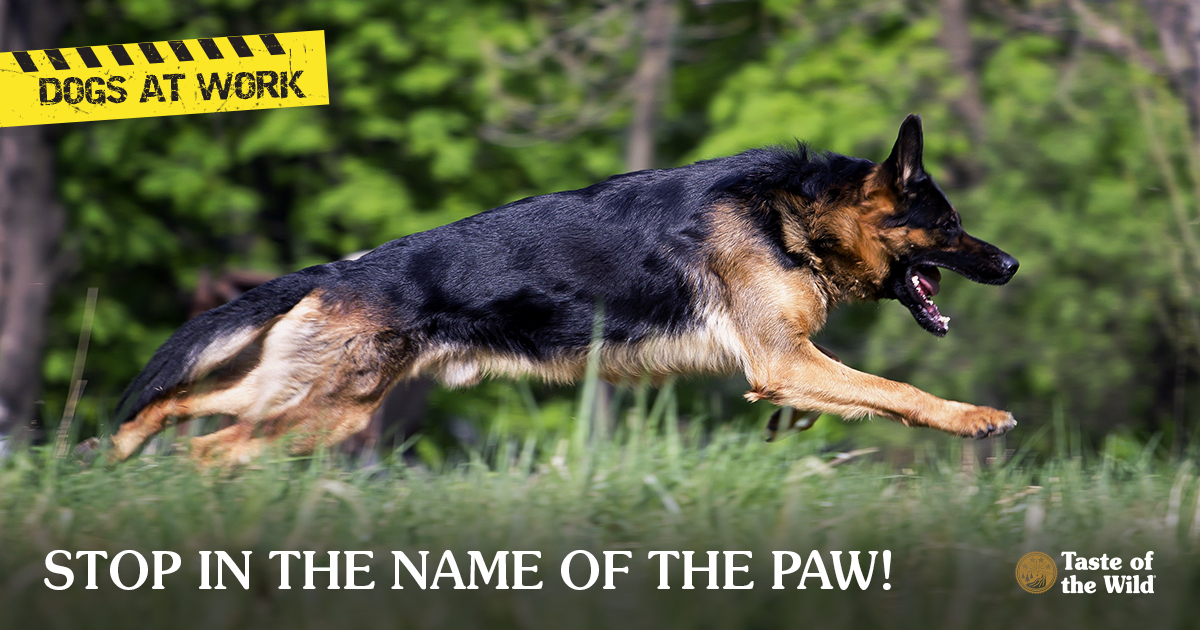
Wanted: fearless, physically active dogs with keen noses to track down fugitives, defend citizens and safeguard their partners.
In police departments across the country, K-9 officers are valued partners of law enforcement officers. These dogs track down and apprehend suspects, detect narcotics and explosives and help keep their partners safe in high-risk situations. Some law enforcement dogs even work for the coroner’s office, searching for human remains. Sadly, some dedicated dogs have even given their lives in the line of duty.
Breeds That Make the Best Cops
K-9 officers are primarily German shepherds, Belgian Malinois and Dutch shepherds or mixes of those breeds. Doberman pinschers, Rottweilers and Bouvier des Flanders have also strapped on a badge.
Other dogs may perform special functions for police. Bloodhounds, for example, are often used for trailing and Labrador retrievers may serve as search and rescue dogs or for drug and bomb detection. Generally, police departments look for dogs who can be calm and not distracted when exposed to crowds of people or other dogs, and don’t have a history of aggression.
Funding to Help Increase K-9 Ranks
Police dogs may be sourced from European breeders with a price tag of $8,000 or more, according to the National Police Dog Foundation (NPDF). Training can cost an additional $12,000 to $15,000 per dog. Then there’s the cost of food and veterinary care for the life of the dog. (As you can imagine, these dogs need diets packed with energy and nutrients to fuel their high activity level, and they are at risk of injury every day.)
Although canine officers play a crucial role, many police departments simply don’t have the budget for these programs and have to rely on private and corporate donations as well as fundraising efforts from organizations such as the NPDF.
Specialized Training for K-9 Coppers
Training typically starts when the dogs are 12 to 15 months of age. Some police departments use outside training organizations, but most have in-house trainers. Dogs may be trained in obedience, article searching, agility, patrol work, urban tracking, building search and apprehension.
Once they have demonstrated proficiency and been certified, the dogs are considered a very real part of the police department. Some K-9 officers even have their own badges. Usually, training with the human partner will continue on a daily or weekly basis to help keep the dog’s skills sharp.
Working the Police Beat
Most police dogs live with their police partners and their families, so it’s easy to see how the dog and the partner often form a very close bond. How close? In a study, police officers who were first responders to a disaster were less likely to suffer from post-traumatic stress disorder (PTSD) if they had a canine partner with them than officers who didn’t. However, if the canine partner died within three years of the disaster, the incidence of PTSD in officers rose dramatically.
It works the other way, too. If the handler showed signs of emotional strain, the dog was more likely to demonstrate aggression to strangers and other behavioral problems.
Depending on their physical health, retired K-9s may live out the rest of their lives with the police handler and their families. Even though the dogs are officially retired, they’re probably the best security system the family has ever had.
The information in this blog has been developed with our veterinarian and is designed to help educate pet parents. If you have questions or concerns about your pet's health or nutrition, please talk with your veterinarian.
